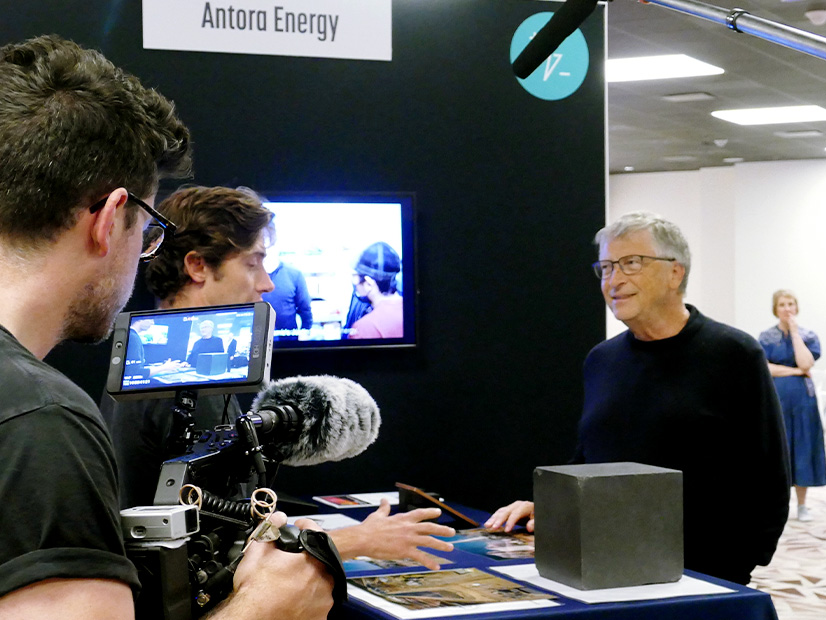Kentucky regulators last month rejected Kentucky Power’s request to recoup $11.5 million in fuel costs incurred during the December 2022 winter storm, while also raising the prospect of penalizing the utility for its performance during the event.
Falling temperatures Dec. 23 caused a spike in demand among the utility’s 163,000 customers in eastern Kentucky, forcing the company to import high-priced power from PJM. By the time the storm passed on Dec. 25, the utility had exceeded what it could recover for fuel and power costs through the non-Fuel Adjustment Clause (FAC) in its tariff.
In its request to the state Public Service Commission, the utility sought to establish a regulatory asset for recovery under a law approved in March that permits utilities to seek PSC approval to “finance extraordinary or other deferred costs” through securitization.
In denying the request, the PSC said Kentucky Power had not taken steps to procure adequate capacity, had failed to demonstrate that outages at its two generators were reasonable and had not proved its costs were properly incurred.
On the capacity issue, the commission pointed out that the utility let a contract with American Electric Power’s (AEP) Rockport Power Plant expire in December without procuring replacement capacity, eliminating a key hedge against wholesale power price fluctuations and shifting risk to consumers.
“Kentucky Power took no action to address its capacity shortfall in regards to energy capabilities, including entering into agreements that could hedge against market power prices. The Commission concludes, as further explained below, that Kentucky Power has not met its burden in this matter, and therefore the request should be denied,” the order said.
Facing Penalties
Along with denying the requested recovery, the commission issued a second order requiring Kentucky Power to show cause as to why it should not be subject to penalties for violating a state law that requires a utility to provide “adequate, efficient and reasonable service” to customers. The second order said the utility could be assessed penalties up to $2,500 per occurrence and per party.
The commission also argued that the utility had not shown that outages at its 1,560-MW coal-fired Mitchell and 295-MW gas-fired Big Sandy generators were reasonable. In response to a data request from the commission, the company said the Big Sandy generator was offline due to repairs that took longer than anticipated to complete, while Mitchell was operating at reduced capacity for reasons largely unrelated to the storm.
The commission additionally questioned the use of the new securitization law.
“Kentucky Power’s request would alter the recovery mechanism for non-FAC eligible purchased power costs and is not an appropriate use of deferral accounting,” the order said. “The existence of securitization legislation does not preempt the commission’s broad authority related to regulatory assets and is not sufficient justification to defer expenses. In fact, securitization is only available for expenses for which deferral accounting has already been approved by the commission. Thus, it does not impact the commission’s decision on whether to grant deferrals.”
In a joint protest, the Kentucky Industrial Utility Customers and the Attorney General’s Office of Rate Intervention argued that Kentucky Power’s request was contrary to the FAC regulations and would preempt the six-month review of the clause — components of which both companies are protesting — and an administrative case investigating the FAC. The protest also posited that purchased power costs should be recovered through a base rate filing, rather than the FAC.
In an email to RTO Insider, Kentucky Power spokesperson Sarah Nusbaum said the company disagrees with the commission’s findings, arguing that purchasing power during Winter Storm Elliott was more affordable than a long-term contract and that the company’s decisions maintained reliability.
“Generation resources are selected based on least-cost principles, and it was less expensive to purchase energy when needed as compared to a long-term purchase power agreement,” Nusbaum said. “Regarding the penalty statute, we do respectfully disagree that the penalty statute is implicated here. We kept the lights on during a record storm and did not willfully violate any Kentucky law, regulation or KPSC order.”
Nusbaum said allowing the company to issue securitization bonds would have reduced carrying costs for the storm expenses and effectively reduced the interest rate compared with recovering those expenses through base rates. The company included securitization bonds in its June 29 base rate filing — along with other strategies for deferring the expenses — with the aim of reducing the immediate impact on ratepayers’ bills.
“Securitization was not the only method we used to reduce rate impact in this case,” Nusbaum said. “Kentucky Power is seeking a lower return-on-equity than was recommended by our expert witness, not proposing to increase depreciation rates, and extending the life of existing meters rather than replacing them with new meters. Additionally, several low-income benefits are proposed in this case, including an optional seasonal tariff to help reduce winter bills, an expansion of the company’s energy assistance program, and a solar garden program that directly benefits low-income customers.”
Utilities in Several States Petition Commissions for Cost Recovery
Several other utilities also are seeking approval to recover costs for expenses related to Winter Storm Elliott.
AEP spokesperson Scott Blake said the Public Service Company of Oklahoma and Appalachian Power in Virginia and West Virginia have filed to recover fuel costs, as well as costs for CCR and ELG work and other storm work.
In Kentucky, Kentucky Utilities and Louisville Gas and Electric received PSC approval for establishing a regulatory asset to recover costs related to a March 3 windstorm that caused nearly 400,000 customer outages. According to the utility’s filing, the storm resulted in around $83 million in operating, maintenance and capital costs. Total operating and maintenance costs are around $23.2 million, of which $7.8 million are included in base rates.
Though the filing sought to create a regulatory asset, it did not include securitization. The commission’s order found that the storm caused damage for which costs could not be reasonably anticipated.
“The commission finds that with regard to KU/LG&E’s request for authorization to establish deferral accounting for the repair and restoration of the Major Storm Event, the costs to repair the damaged assets are extraordinary and nonrecurring and could not have been reasonably anticipated or included in KU/LG&E’s planning,” the April 5 order said.


